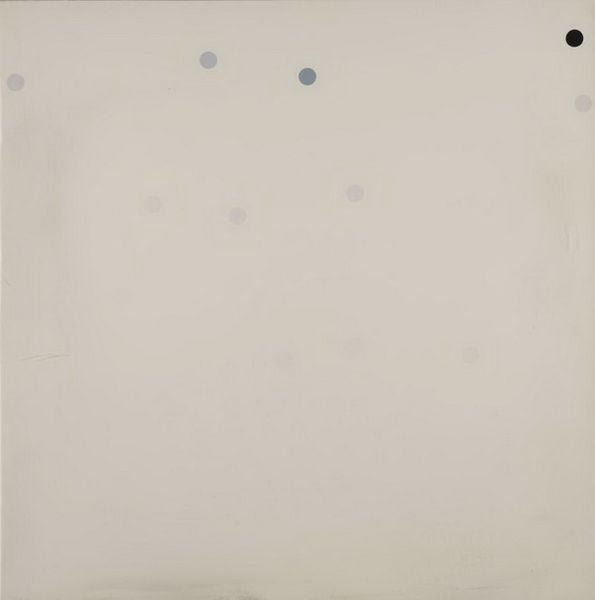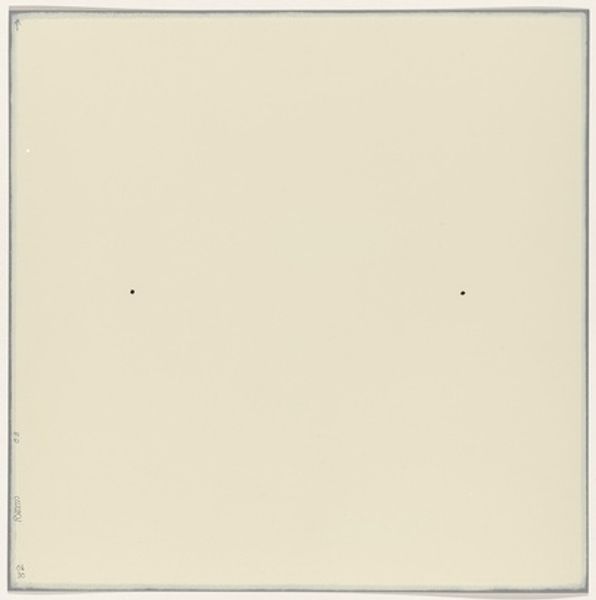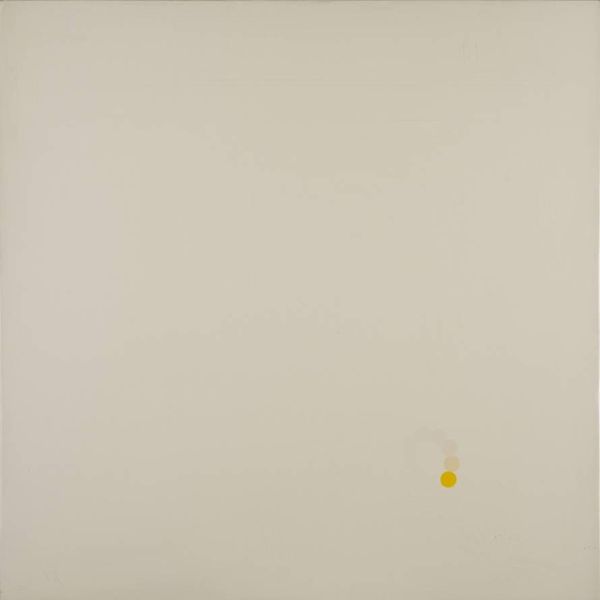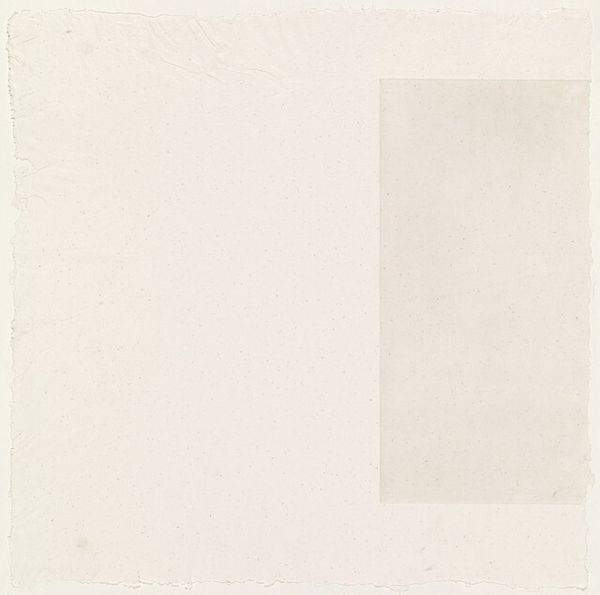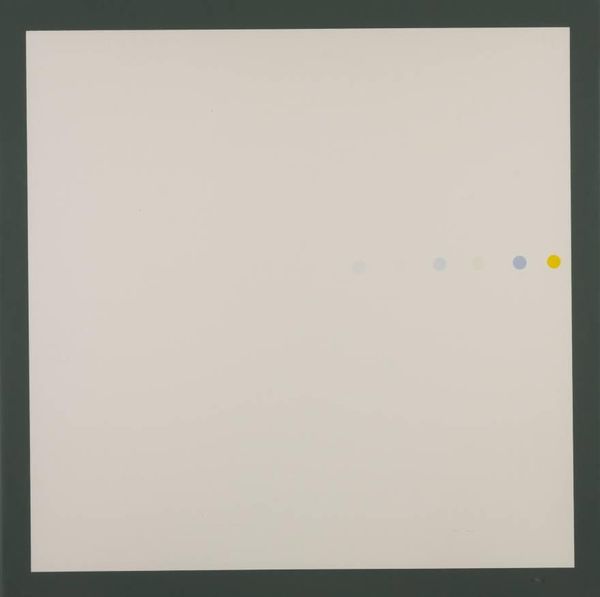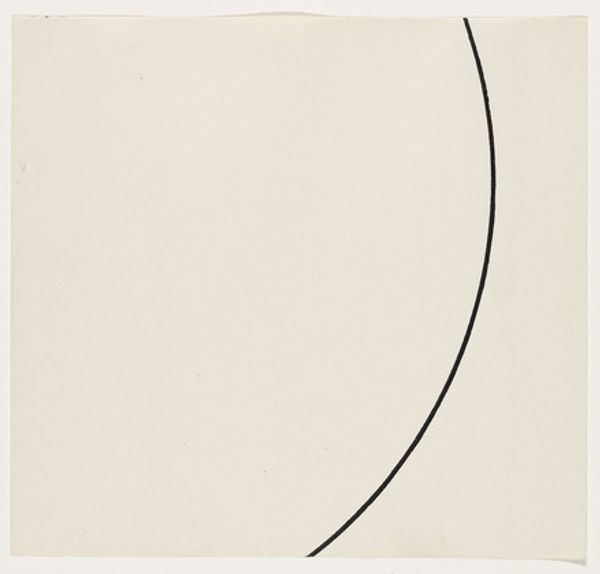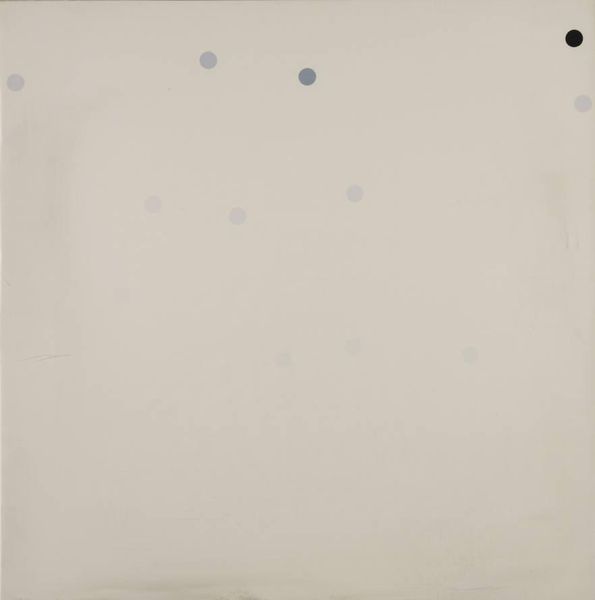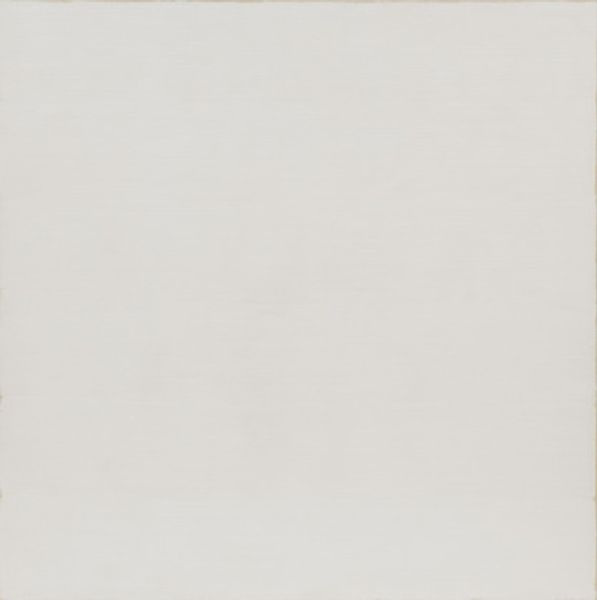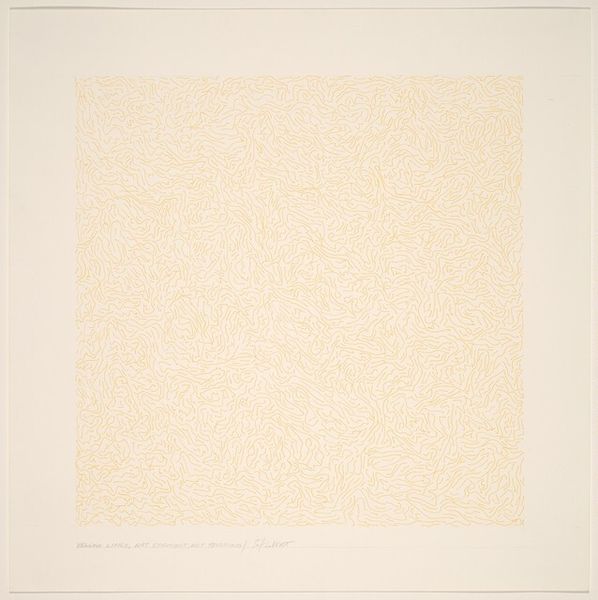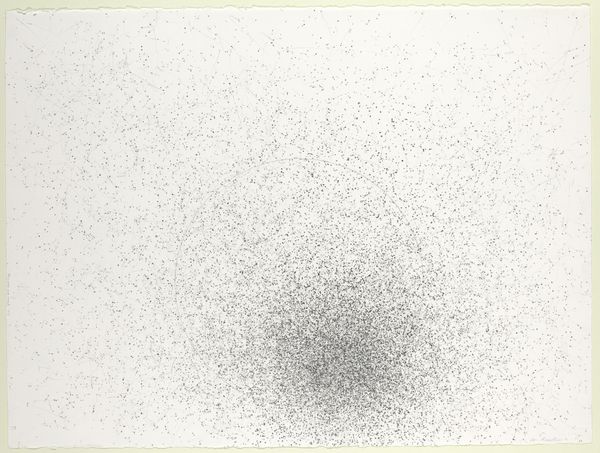
Copyright: Robert Ryman,Fair Use
Editor: So, here we have Robert Ryman's "First Conversion," created in 2003 using graphite and linocut on paper. My immediate reaction is...stark. There's so much emptiness. What do you see in it? Curator: I see a potent interrogation of value, visibility, and presence within a system – specifically the art world, but more broadly, social structures. Ryman, like many minimalists, forces us to confront what constitutes "enough." How much mark-making is necessary before something becomes "art," or, even more profoundly, is deemed worthy of attention within our society? Editor: That's interesting. So, it's not just about the aesthetic, but a critique? Curator: Absolutely. The near-blankness challenges the traditional power dynamics in art. Who decides what’s significant? Is value inherent, or is it constructed by institutions and individuals with privilege? What about works – or even people – rendered ‘invisible’ because they don’t conform? Editor: So, the title "First Conversion"... is it about changing our perspective? Curator: Precisely. Consider it as a call to convert our understanding, to see value in what might be overlooked, and question the established canons that perpetuate inequality, which determine whose stories are told. This challenges us to find new, potentially revolutionary, ways of appreciating, valuing and supporting overlooked cultural production and human potential. Editor: I never thought a seemingly simple dot could carry so much weight. I’ll definitely be looking at minimalist art differently now. Curator: It's about digging beneath the surface, questioning, and converting your assumptions. Art can reveal hidden cultural codes, as well as political implications, with simple yet powerful approaches.
Comments
No comments
Be the first to comment and join the conversation on the ultimate creative platform.
